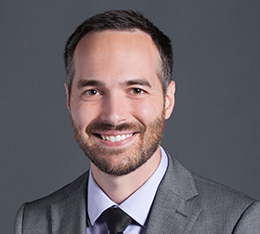This spring, the Supreme Court plans to release its ruling on whether federal student loan debt can be forgiven for up to 40 million Americans. Regardless of the outcome, the pandemic pause on repaying debt will end, and repayment may resume by June—marking an end to two years of debt relief.
The debt relief plan under consideration would forgive up to $10,000 in federal loans for those making less than $125,000 a year ($250,000 for households). An additional $10,000 of student loan forgiveness is available to eligible borrowers who ever received a Pell Grant (which indicates that borrowers’ families were low-income during college). Relief for low-income borrowers provides additional help to those with fewer family resources to fall back on.
Based on those income thresholds, about 3.5 million Californians may have some loans forgiven and about two-thirds of them are eligible for the maximum amount—$20,000—because they received Pell Grants. The Supreme Court decision could help many Californians who struggled to pay back loans before the pandemic, especially borrowers who did not graduate and may have lower incomes than graduates. However, the US government estimates that funding this debt relief will cost more than $379 billion over the life of the program.
How do Californians feel about the idea of eliminating college debt? Six in ten Californians favor a government policy to eliminate college debt, according to the November 2022 PPIC Statewide Survey. Support drops sharply as income rises and is lower among homeowners (51%) than renters (72%). Notably, support is higher among those who never attended college (69%) and those who graduated college (59%) than those who went to college and did not graduate (51%). Across racial/ethnic groups, Latino (76%) and Black (73%) respondents are far more likely than Asian (53%) and white respondents (50%) to support eliminating college debt.
While support for eliminating college debt varies among racial and ethnic groups, the typical amount borrowed by each group also varies. Thus, student loan forgiveness could improve racial equity. For example, three-quarters of Black graduates from California State University and two-thirds of Black graduates from University of California graduated with debt, compared to half of all graduates in each system, according to the California Student Loan and Debt Service Review Workgroup. Disparities in debt also persist several years after graduation. Four years after graduation, Black borrowers with bachelor’s degrees carry one-and-a-half times as much debt as their white peers.
In a state where housing affordability is a major concern, debt relief could advance intergenerational economic mobility, such as by freeing up funds to buy a house. Student debt reduces individuals’ chances of owning a home—reflecting the tradeoff between paying off student loans and affording a mortgage. Debt relief could place more Black Californians and borrowers from low-income backgrounds on a pathway to building wealth.
The Biden administration has already wiped defaults from borrowers’ records—offering a fresh start when payments are reinstated—and has proposed halving payments for Income-Driven Repayment plans. These proposals, along with a possible increase to Pell Grants, signal that the Supreme Court’s decision on debt relief won’t be the last effort to alleviate the strain of affording college. PPIC will continue to track student debt and policies to keep college affordable for Californians.
Topics
Affordability Higher Education pell grants racial disparities Statewide Survey student loans US Supreme CourtLearn More

Extended Freeze on Student Loan Payments Could Help Many California Borrowers

Is College Worth It?

Keeping College Affordable for California Students




